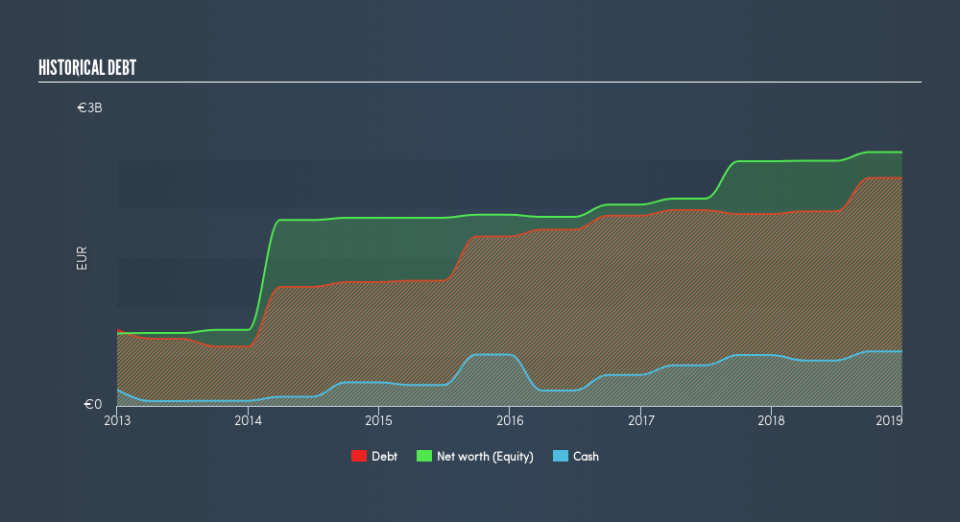Is Korian's (EPA:KORI) Balance Sheet A Threat To Its Future?

Want to participate in a short research study? Help shape the future of investing tools and you could win a $250 gift card!
Small-caps and large-caps are wildly popular among investors, however, mid-cap stocks, such as Korian (EPA:KORI), with a market capitalization of €2.8b, rarely draw their attention from the investing community. While they are less talked about as an investment category, mid-cap risk-adjusted returns have generally been better than more commonly focused stocks that fall into the small- or large-cap categories. Let’s take a look at KORI’s debt concentration and assess their financial liquidity to get an idea of their ability to fund strategic acquisitions and grow through cyclical pressures. Note that this information is centred entirely on financial health and is a top-level understanding, so I encourage you to look further into KORI here.
Check out our latest analysis for Korian
KORI’s Debt (And Cash Flows)
KORI's debt levels surged from €2.9b to €3.3b over the last 12 months – this includes long-term debt. With this rise in debt, KORI currently has €552m remaining in cash and short-term investments , ready to be used for running the business. Moreover, KORI has generated €377m in operating cash flow during the same period of time, resulting in an operating cash to total debt ratio of 11%, indicating that KORI’s current level of operating cash is not high enough to cover debt.
Can KORI meet its short-term obligations with the cash in hand?
With current liabilities at €1.4b, it seems that the business may not have an easy time meeting these commitments with a current assets level of €999m, leading to a current ratio of 0.72x. The current ratio is the number you get when you divide current assets by current liabilities.
Does KORI face the risk of succumbing to its debt-load?
KORI is a highly-leveraged company with debt exceeding equity by over 100%. This is not uncommon for a mid-cap company given that debt tends to be lower-cost and at times, more accessible. We can test if KORI’s debt levels are sustainable by measuring interest payments against earnings of a company. Ideally, earnings before interest and tax (EBIT) should cover net interest by at least three times. For KORI, the ratio of 3.04x suggests that interest is appropriately covered, which means that lenders may be inclined to lend more money to the company, as it is seen as safe in terms of payback.
Next Steps:
KORI’s high cash coverage means that, although its debt levels are high, the company is able to utilise its borrowings efficiently in order to generate cash flow. But, its low liquidity raises concerns over whether current asset management practices are properly implemented for the mid-cap. Keep in mind I haven't considered other factors such as how KORI has been performing in the past. You should continue to research Korian to get a better picture of the stock by looking at:
Future Outlook: What are well-informed industry analysts predicting for KORI’s future growth? Take a look at our free research report of analyst consensus for KORI’s outlook.
Valuation: What is KORI worth today? Is the stock undervalued, even when its growth outlook is factored into its intrinsic value? The intrinsic value infographic in our free research report helps visualize whether KORI is currently mispriced by the market.
Other High-Performing Stocks: Are there other stocks that provide better prospects with proven track records? Explore our free list of these great stocks here.
We aim to bring you long-term focused research analysis driven by fundamental data. Note that our analysis may not factor in the latest price-sensitive company announcements or qualitative material.
If you spot an error that warrants correction, please contact the editor at editorial-team@simplywallst.com. This article by Simply Wall St is general in nature. It does not constitute a recommendation to buy or sell any stock, and does not take account of your objectives, or your financial situation. Simply Wall St has no position in the stocks mentioned. Thank you for reading.


